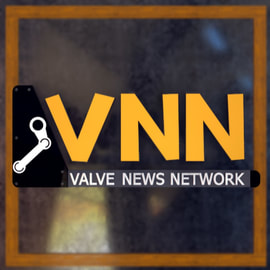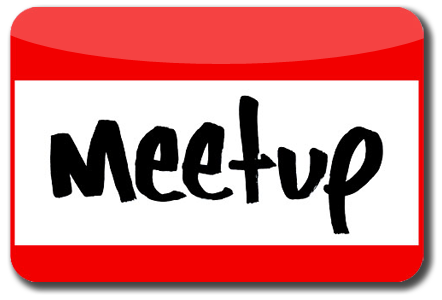 Kremlin, Moscow Kremlin, Moscow Some two weeks after announcing the discovery of more than 3,000 ads addressing social and political issues central to the 2016 U.S. presidential election, Facebook has released those ads to groups investigating election-tampering claims. The ads ran on the Facebook’s platform between 2015 and 2017. According to Facebook attorney Colin Stretch, the ads appear to have originated from accounts associated with a Russian entity known as the Internet Research Agency. On Monday, The Washington Post reported that Russia’s Internet Research Agency created the ads to capitalize on racial and religious tensions leading up to the U.S. election. The agency creates and disseminates fake news that targets domestic and foreign groups and individuals. In a 2015 New York Times Magazine expose, Adrian Chen wrote, “The [Internet Research Agency] had become known for employing hundreds of Russians to post pro-Kremlin propaganda online under fake identities ... in order to create the illusion of a massive army of supporters; it has often been called a ‘troll farm.’ The more I investigated this group, the more links I discovered between it and the hoaxes.” Facebook decided it was time to provide information related to those ads, and the ad content, to the special counsel investigating allegations of Russian interference in the 2016 election. However, pundits and concerned citizens implored Facebook to share the ad content more broadly. So, Stretch noted that Facebook would share the ads with congressional investigators. “We believe it is vitally important that government authorities have the information they need to deliver to the public a full assessment of what happened,” Stretch said in an announcement posted to the Facebook newsroom. This prompted another “Hard Questions” response from Facebook. If you’re a regular reader of this column, you might remember reading my review of Facebook’s “Hard Questions” about the online fight against terrorism, or how the platform handles a deceased user’s profile content. Elliot Schrage, vice president of policy and communications, addressed “Hard Questions” on the fake news ad content probe, including why Facebook shared the ad content with the special counsel and Congress and not with the general public, and if they expect to find more ads from Russian or other foreign actors using fake accounts. “When we’re looking for this type of abuse, we cast a wide net in trying to identify any activity that looks suspicious,” Schrage wrote in his “Hard Questions” post. “Bad actors are always working to use more sophisticated methods to ... cover their tracks.” Of Facebook’s 1.28 billion daily active users, only 14 responded to Schrage’s post with comments and questions of their own. Read Schrage’s post and user responses at newsroom.fb.com. Search for “Hard Questions.” You can send question suggestions to Facebook at [email protected].
0 Comments
I’ve been using Twitter for the better part of 8 years.
In all honestly, it’s been a love-hate relationship. I can’t fix the things I hate about Twitter, so I use workarounds to avoid mean tweets and unpleasant interactions. The things I love about Twitter, however, I tend to exploit. GIFs are excellent example. I’m not ashamed to admit, I’m a notorious animated GIF user on Twitter. In fact, most if not all of my tweets in recent months have included an image, video, or animated GIF. My animated GIF philosophy is quite simple: if a picture is worth a thousand words, then why not use multilayered images? After all, we’re limited to 140 characters on Twitter, and a lot can be misinterpreted without a little extra context. Not long ago, I posted a tweet without an animated GIF, and a friend replied, “I question whether or not this is the real @adamearn (my Twitter handle). Where’s the meme?” He was referring, of course, to my love of animated GIFs. According to urbandictionary.com, GIF is the acronym for “graphics interchange format.” Back in the early days of the internet, we used GIF images because they were small, compressed files. As a webmaster in the mid-90s, I was trying to create beautiful websites that would load on home computers connected to 56k modems (for you youngins, that’s really, really slow). We used GIFs to make upload and download much faster. The proper pronunciation of GIF uses a soft “g” sound: like JIF. Urbandictionary.com notes that, at some point, one of the GIF format creators, Bob Berry or Steve Wilhite said, “Choosy programmers choose GIF.” This was a play on the peanut butter commercials with the slogan, “Choosy moms choose Jif,” referring, of course, to the Jiffy peanut butter brand. Yet, there’s a weird pronunciation battle that lingers, with soft “g” users on one side and hard “g” users on the other. It’s the web designers equivalent of a West Coast-East Coast rap battle. Yep, we’re really that cool. But animated GIFs are a step up from small, static images. These GIFs are actually multilayered images that create the video-like, animated effects we see in memes on Twitter and other platforms. Like static GIFs, animated GIFs are small files and easy to load. It’s hard not to want to use them. Ask most Twitter users and they’ll have their favorites. One of my favorites is “white guy blinking,” an animated GIF of video editor Drew Scanlon blinking in disbelief in reaction to a comment from a video game player. Open your compose window in Twitter and look for the square GIF icon. From there, you can search for your favorites. Twitter helps by providing some suggested categories such as “applause” and “YOLO.”  At age 14, Tyler McVicker of Vienna, created Valve News Network (VNN), a YouTube channel devoted to news and information about video games. More than six years later, McVicker has amassed over 240-thousand subscribers. Subscribers are the lifeblood of video creators who use YouTube channels to earn income. One of McVicker’s most recent videos, a story related to the first-person shooter game Half Life, received more than 680-thousand views. McVicker, now a student at Youngstown State University majoring in computer science and journalism, talked with me about VNN and his success on YouTube: Q: What’s VNN and how did you get started? A: VNN is a hub where fans can find game information quickly and easily. When I was 10, I played a video game called Portal. I fell in love. It was completely different from anything I'd ever seen, and I wanted to know as much about it as possible. When I wasn’t replaying the game, I was trying out levels other players made, or I was reading about Valve Software, the company that created Portal. I wanted to know everything about (Valve). I figured out the majority of places hardcore fans would discuss news about the game and Valve, and I wanted this share this news with mainstream fans. So, I started VNN in July of 2011. Q: VNN has an impressive number of subscribers. What strategies did you use to build your fan base? A: My subscribers are a surprise to me as well. I don't think I have a real strategy. My entire purpose is to create things that I’d want to watch if I were in the audience. I love Valve games. I love game development and things cut from games. I love the communities that surround these games, and that result in incredible art and mods (i.e., game modifications). So I make videos that hit on these passions. I feel that the emotion behind the words comes through when I make these videos. I tend to be as personable as possible. I’m very upfront about who I am, what I do, and what I feel. This does mean people can easily attack me when things aren’t up to a certain standard. But it also allows anyone to be part of the content, to be part of a real community. Q: What’s your strategy for marketing new VNN content? A: I don’t promote much. I don’t find I need too. I try to be a real person as much as possible, meaning whenever someone sees my logo, they know exactly what they’re getting when they click it. Everything has to do with adding as personal of a touch as possible, to allow people to feel welcomed, respected and appreciated. Q: Do you follow other successful YouTube users? If so, what have you learned from them? A: Before I started VNN, I watched YouTube everyday. And I still do. My main inspirations are Ross Scott, LGR (Lazy Game Reviews), Jim Sterling, Jon Jafari, Ben “Yahtzee” Croshaw. More recently, I’ve been watching Joseph Anderson. I can’t nail down what I've learned from these creators. It’s safe to say that my own format is an amalgam of them all. Q: My kids are young, but they claim they’re going to “major in YouTube” when they get to college. Do you have any advice for people who want to start a YouTube channel? A: Success on YouTube is completely based on luck more then anything else. Also, I feel like the platform itself is slowly dying. Earlier this year, many major corporations that bought ad space before and during videos pulled out. YouTube tried to remedy the situation with an automated process for flagging any video considered “inappropriate.” The problem is, the bot doesn’t work as intended, and is based on machine learning. It was created too quickly, and the bot wasn’t given enough time or training data. So they instead let the bot lose to make mistakes in public. These mistakes resulted in any video being uploaded having the possibility of being flagged, resulting in little to no earnings on that work. The worst part is, YouTube can’t tell the creators what they did wrong, due to the bot’s operations. Great example: I put out a video last week, getting close to 700,000 views, and it was flagged about 20 hours into its life. I wasn’t alerted via email or any other form of communication, and I wasn’t told what I’d done wrong. So that day I put out a video announcing the flag, and even though the community support was amazing, in about an hour, the announcement video was flagged. I made another video, as the situation seemed to get a little crazy, and immediately, the third video was flagged. No alerts, no reasons given, and no official way to contact with people who actually work at YouTube. The content creators are forced to request a manual review, and sit there as their videos receive attention and views that will go unpaid. These manual reviews can take upwards of a week. This is one of many blunders that YouTube and Google have pulled over the years affecting creators, and there’s no easy way to connect with YouTube support. It paints a picture of YouTube caring more for the companies than the creators, even though it’s the creators who made the site what it is today. My advice for people who want to create their own YouTube channels and content is to wait for YouTube to fix their site, or for a YouTube competitor to rise up. Q: What's next for you and VNN? A: My dream is to work at Valve. That’s no secret, and why I get so much criticism. However, in the short term, my goals are simple: more growth, more videos and more topics. I have other unused channels with decent subscriber numbers, and I intend to use those soon. Other than that, I plan on finishing degrees in computer science and journalism, and continue making a name for myself in the games journalism industry. To watch McVicker’s videos, search for “Valve News Network” on YouTube or Google.  In this social media age, it’s hard to believe you can pick up and move to a new city and not know a single person. No family. No friends. No friends of friends. But that’s exactly what happened to my friend, Sam (I changed his name; you’ll understand why in a second). After some tension with a girlfriend, a crappy job, and the feeling his 30s were passing him by, Sam relocated from Charlotte to Dallas in hopes of finding a better life. “This isn’t to say Charlotte is a bad place. I loved it there,” Sam explained in a Facebook Messenger exchange (he gave me permission to include our conversation here so long as I changed his name and didn’t mention his ex-girlfriend by name). “(I) needed to escape the job and some people. (I) needed a change of pace if I wanted to be happy.” But what he found was loneliness, which was hard for me to understand considering his elaborate connections on social media. He was figuratively connected to everyone. He has “500+” connections on LinkedIn (he said the number tops 4,000 connections), more than 2,000 Facebook “friends,” and a smattering of Twitter followers. Surely he’d know someone in Dallas. “I had tons of friends in Charlotte. Now I’m on an island in Dallas,” he explained. “Side note: yes, I’m connected to some people in Dallas, but through (ex-girlfriend). So it would be really weird, and possibly bad, if I reached out to one or more of them.” Good point. “So what does ‘Mr. Social Media’ have for a lonely guy in a big city,” Sam asked. “And no. Don’t tell me to use Tinder. That’s one of the reasons I ended up in Dallas.” Another good point. He wasn’t ready to date (his words; not mine), so dating apps were off the table. Instead, I suggested using apps that connected him with people offline, but for reasons other than finding love and hooking up. We turned to Meetup (available for Android and iOS devices). This app brings people together with similar interests online to explore, teach and learn things offline. Meetup has more than 32 million members, 288,000 Meetup groups in 182 countries, nearly 615,000 monthly “meetings,” and 4 million monthly RSVPs for events. “People run marathons, thanks to running Meetups. They write, thanks to writing Meetups. They change their careers, thanks to career Meetups,” the app description reads. “(Meetup users) talk, help, mentor and support each other – all in pursuit of moving their lives forward.” This is exactly what Sam needed. And so far, so good. Sam is a runner and outdoor enthusiast. Once he signed on to Meetup, he joined a local running group. “Next week I’m taking a kayaking class,” he said. “Wish me luck.” |
AuthorDr. Adam C. Earnheardt is special assistant to the provost and professor of communication in the department of communication at Youngstown State University in Youngstown, OH, USA where he also directs the graduate program in professional communication. He researches and writes on a variety of topics including communication technologies, relationships, and sports (with an emphasis on fandom). His work has appeared in Mahoning Matters as well as The Vindicator and Tribune-Chronicle newspapers. CategoriesArchives
July 2023
|

 RSS Feed
RSS Feed